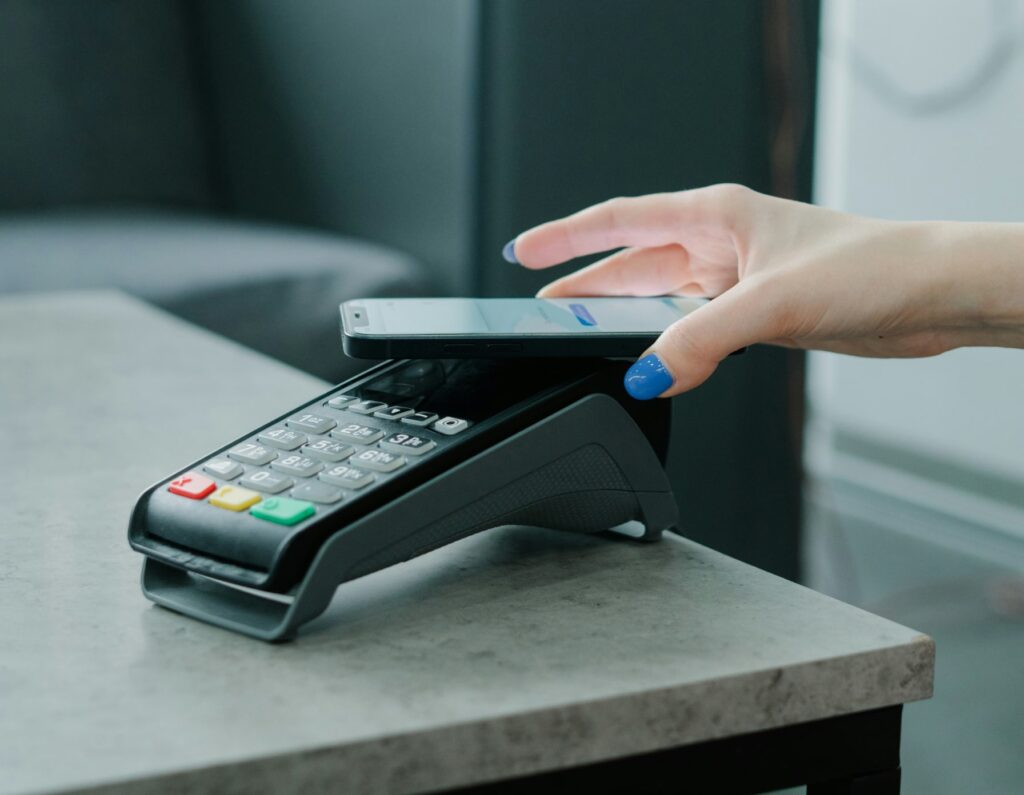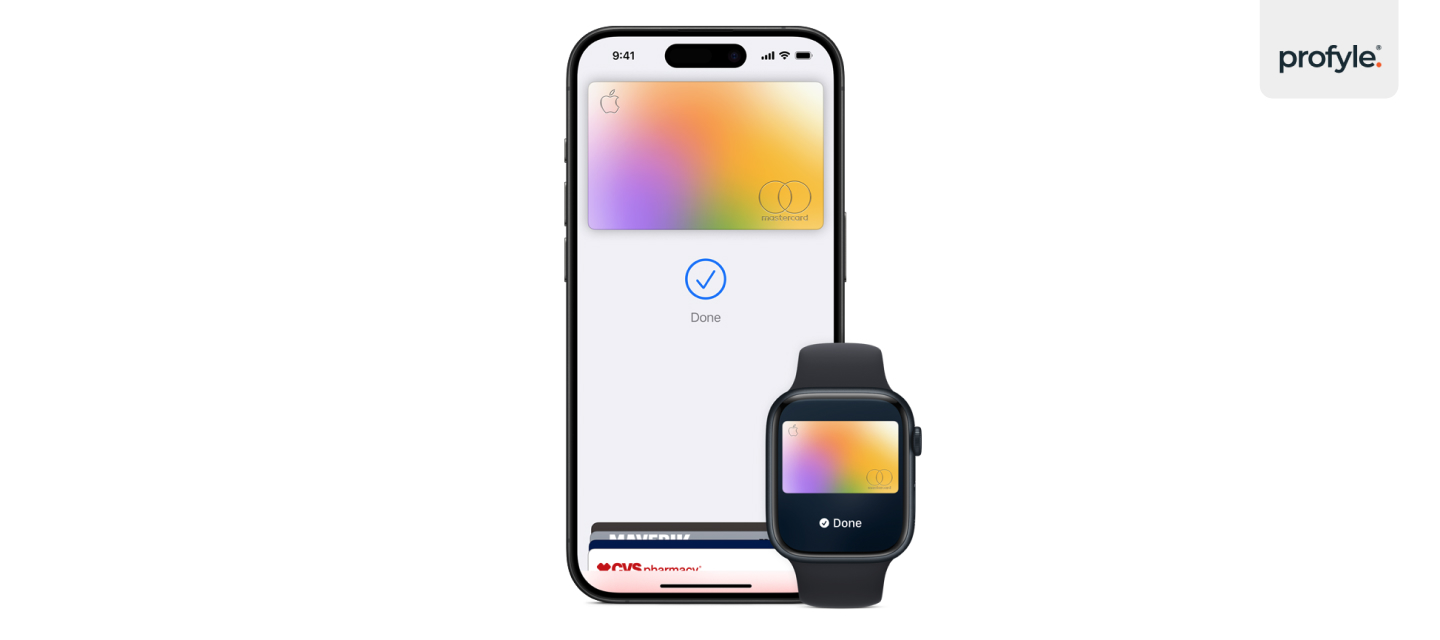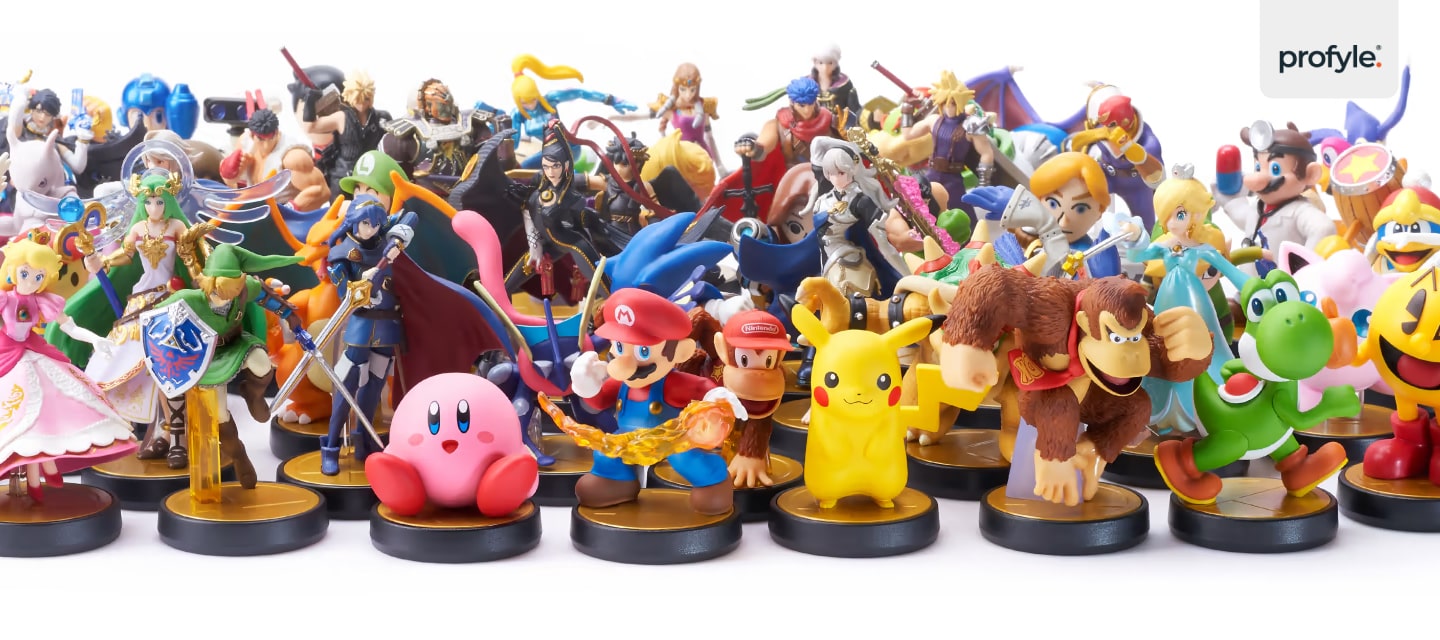
Have you happened to use your phone to pay for something by tapping it on a payment terminal? Or have you shared pictures or files with a friend by touching your phones together? If yes, then you’ve used a technology called NFC, which stands for Near Field Communication.
I’ll explain everything you want to know about NFC in a few simple words.
NFC lets two devices communicate when they are very close, within a few centimeters. This communication happens wirelessly via radio frequencies, meaning no cables are needed.
NFC uses radio frequencies (13.56 MHz) to connect two nearby devices securely. But, NFC is unlike other wireless tech, like Bluetooth or Wi-Fi. It only works when devices are very close to each other. This proximity makes NFC particularly suitable for secure transactions.
That’s why it is used for payments by Apple Pay and Google Pay.

Think of NFC as a way for devices to “talk” to each other, but only when they are right next to one another.
NFC’s main purpose is to exchange small bits of data quickly and securely. It does this without the need for an internet connection or cables. That’s why it is built into most modern smartphones, tablets, and even smartwatches.
NFC works by creating a connection between two devices using something called radio waves. These are invisible waves that can carry information from one device to another. To use NFC, both devices need to have an NFC chip inside them.
At its core, NFC uses electromagnetic induction, like RFID. NFC uses a small chip called an NFC tag. The tag can communicate with other NFC devices via radio waves.
Here’s a step-by-step breakdown of how NFC works:
Initiation: NFC involves two devices: the initiator and the target. The initiator (your smartphone, for example) generates a radio frequency field. The target (like a payment terminal or another phone) responds.
Data Exchange: The initiator sends data, and the target reads or receives it. This process is seamless. It requires no manual pairing. Unlike Bluetooth, it needs several steps to connect devices.
Active and Passive Modes: NFC devices can operate in two modes:
Active Mode: Both devices generate a radio signal to communicate with each other.
Passive Mode: One device, usually a powered one like a smartphone, generates a radio signal. The other device, an unpowered tag, responds.
NFC’s passive mode powers contactless payment cards. It lets them work without a power source.
For example, when you pay with your phone, it and the terminal exchange info through NFC. Usually while the payment terminal is in passive mode. Your phone’s NFC chip sends your payment info to the machine. It then processes the payment.
One key thing about NFC is that it only works when devices are very close together—typically about 4 cm or less. It’s more secure than other wireless tech. It’s harder to intercept the shared information.

NFC has many uses in our daily lives. According to one study, 85% of consumers have used NFC technology. Some common examples include:
Digital Business Cards: Did you know you can use a NFC business card instead of a paper business card? You can share your contact details with just a tap on someone’s smartphone with it. The technology is specifically used in digital business cards. You tap a smartphone with a NFC card to instantly share your contact information. Replacing the need for paper business cards.
Contactless Payments: This is the most popular use of NFC. You can pay for things at shops by tapping your phone on a payment machine, like Google Pay or Apple Pay. As of 2024, 51% of American now use NFC for contactless payments. Cash usage has dramatically declined from 31% of payments in 2016 to 18% in 2022.
Public Transport: NFC technology is used in transportation systems worldwide. In many cities, commuters use NFC-enabled transit cards or smartphones to tap in and out of buses, trains, and subways.
Sharing Files: You can quickly share photos, contacts, and apps between phones by placing them close together.
Pairing Devices: You can use NFC to connect devices like headphones or speakers to your phone. It doesn’t require complicated settings.
Access Control: Many rental property companies and hotels use NFC for easy and more secure access for their tenants and guests. You can use an NFC card or phone to unlock doors.

Here are some of the more uncommon uses of NFC technology:
Smart Posters: Some ads have NFC tags. You can tap your phone on them to get more info, like downloading an app, opening a website, or getting directions to a store.
Gaming: NFC is used in toys and gaming consoles (such as Nintendo’s Amiibo figures) to unlock special features or characters in games. This adds a new level of interactivity to the gaming experience.
Digital Product Passports: NFC tags on a product can share data about the product’s eco-friendliness. Helping both companies and consumers make more environmentally-friendly decisions.
NFC and Bluetooth are both technologies that let devices communicate wirelessly, but they work in different ways.
Range: NFC works only when the devices are very close together (less than 4 cm), while Bluetooth can work over longer distances (up to 10 meters or more).
Power: NFC uses very little power compared to Bluetooth, making it ideal for quick tasks like payments or unlocking doors. Bluetooth, on the other hand, is better for tasks that need more power, like streaming music to headphones.
Speed: Bluetooth is faster for large file transfers. But, NFC is quicker for simple tasks, like payments or connecting devices.
So, which is better? It depends on what you need! If you want to transfer large files or listen to music, Bluetooth is the way to go. If you just want to pay for something quickly or connect two devices in an instant, NFC is a better choice.
Although both NFC and Bluetooth are used to share data between devices wirelessly, they are different in several key ways:
| Feature | NFC | Bluetooth |
| Range | Very short (typically less than 4 cm) | Long range (up to 10 metres or more) |
| Power Consumption | Very low | Moderate |
| Pairing | Automatic, no setup needed | Requires manual pairing |
| Speed | Slow for data transfer | Fast for large files |
| Use Cases | Payments, access control, file sharing | Audio streaming, file transfers |
One of the best things about NFC is that it uses very little power. NFC only uses power when it’s actively being used.
So, if you have NFC turned on but aren’t using it, it won’t have a noticeable impact on your battery life. You can leave it on without worrying about your phone running out of charge quickly.
However, if you rarely use NFC, it might be a good idea to turn it off for security reasons. NFC requires close proximity to work. Turning it off prevents accidental connections or data exchanges. You can turn off NFC in your phone’s settings with just a few moves.
However, it’s usually safe to keep NFC on if you use it frequently for things like payments or pairing devices. NFC doesn’t use much battery, and it only works when your phone is very close to another device, so it’s quite secure.
Not all phones come equipped with NFC, although most modern smartphones do. Apple, Samsung, Google, and other top phone makers include NFC in their flagship models. This is because NFC is necessary for things like contactless payments and file sharing.
But, some budget or older phones may not have NFC. To check for NFC on your phone, go to the Settings menu. Look for “NFC” under connections or wireless settings. If the option is there, your phone supports NFC.
Here is the complete updated list of phones that support NFC.
NFC makes life easier and more convenient. Here’s why you might want it:
Fast Payments: With NFC, you can pay for things quickly and securely without carrying cash or cards.
Convenience: NFC lets you quickly and easily share files. No need for complicated setups or steps.
Easy Sharing: Sharing files or contacts with friends is as simple as touching phones together.
Simple Connections: NFC makes connecting to other devices, like speakers or headphones, fast and easy.
While NFC is super useful, it does have a few downsides:
Limited Range: NFC only works at very short distances (about 4 cm or less). This means you need to get really close to the other device for it to work.
Not Available Everywhere: Even though NFC is becoming more popular, it’s still not accepted everywhere. Some stores and countries don’t support NFC payments.
Security Concerns: NFC is usually safe. But, there is a small risk. Someone with bad intentions could get close to your phone and try to steal information. But this is rare and most phones have extra layers of security, like PIN codes or fingerprint scanners.
No, NFC is not faster than Wi-Fi. In fact, Wi-Fi is much faster when it comes to transferring large amounts of data, like videos or big files. However, NFC is quicker for small, simple tasks like making payments or pairing two devices.
Wi-Fi is better for things like streaming videos or playing online games, while NFC is great for quick interactions. Here is how NFC compares to Wi-Fi and Bluetooth:
One of the most exciting developments is the potential for wireless NFC charging, with specifications for charging up to 3 watts by 2028. This will let wearables and other small devices charge without bulky cables.
NFC has some security concerns, especially with short-range data skimming. But advancements in encryption and biometric verification are making it safer.
Overall, NFC is a powerful and convenient technology that is becoming more common in our everyday lives. From making quick payments to sharing files and connecting devices, NFC offers many benefits with few downsides.
Whether you’re paying for a coffee or sharing a photo with a friend, NFC is here to make things simple.
Sign up for our free 45-day trial and experience the future of networking today. Embrace efficiency, embrace sustainability, embrace the future with Profyle Card.
Don’t forget to follow us on LinkedIn, Instagram and Twitter
Copyright © 2025 Profyle Card Ltd. – Registered in England and Wales with company number 12973729.
Business address: 16 Cole Street, London, SE1 4YH, United Kingdom. VAT registration number: GB424998061